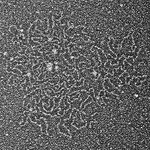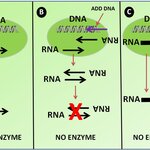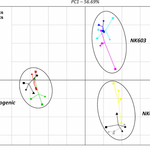Genetics & Molecular Biology

People with cystic fibrosis suffer repeated lung infections because their airway mucus is too thick and sticky to keep bacteria, viruses, and other pathogens from causing chronic infection. How mucus becomes abnormal in
cystic fibrosis
airways has never been fully understood, but a new study has determined that mucin proteins, which give mucus its gel-like properties, fail to unfold normally in
cystic fibrosis
airways, making airway mucus much more thick and sticky than it would be otherwise.
Cystic fibrosis is a rare genetic disease that affects about 70,000 people worldwide. It occurs when…

In case you haven’t been keeping up-to-date with the latest news in the biotechnology regulatory system (and how could you not?), the system is under revision. As part of the new Coordinated Framework the FDA stated it would clarify how it will deal with the hot-button topic of genome editing, and update its guidance documents accordingly. As part of this process the FDA opened a docket on regulations.gov to receive public comments about the issue. As you might expect, a large majority of the comments have been less than scientific.
They are asking for your evidence-based input. …

Metabolism, the set of processes through which we gain energy from food and produce the biomolecules we need in our body's cells, is universal to life. The biochemical pathways that underpin these processes are highly similar across all organisms and species.
One central metabolic pathway learned by every A-level biology student is the Krebs cycle - which Nobel laureate Krebs actually called the citric acid cycle. It utilizes Coenzyme A as the first step in our body's energy factory products. But how did this essential set of chemical reactions, each step catalyzed by an enzyme, first…

Genetic variants linked to autism spectrum disorders (ASD) contribute to enhanced cognition and are therefore positively selected in spite of the problems they also bring along – new evidence has just been published in PLOS Genetics [1]. The problems these genes bring along are the price to pay for relatively rapid evolutionary advancements. It needs a much longer time for further natural selection to smooth the bugs out – this is all obvious, simple science. Another example is the genetic predisposition of Ashkenazim Jews to diseases such as Tai-Sachs, which comes along with their high…

With the availability of Arctic Apples around the corner,
there are a lot of questions swirling about how the browning is suppressed when
the apple is exposed to air. The
browning process has great implications for the value of fruits and fruit
products. This natural discoloration
leads to less consumption of fruit, as well as substantial economic loss and
food waste.
There have been a lot of misleading articles on the Arctic
Apple, and even some well-intended articles miss the mark. In the interest of clarity, this article
provides deeper explanation into the science…

In what seems like a scene from the movie Groundhog Day, another rat study has come out of the laboratory of Dr. Giles-Eric Séralini, only in this case it is Roundup and not GMOs that are under fire. When I read the title of the paper, “Multiomics reveal non-alcoholic fatty liver disease in rats following chronic exposure to an ultra-low dose of Roundup herbicide”,
I assumed a new study had been performed by the laboratory showing what this specific title appears to conclude i.e. that rats exposted to low levels of Roundup developed non-alcoholic fatty liver disease. …

A large-scale international study involving 700,000 participants has revealed 83 genetic variations controlling human height.
It is well-known that above-average-height parents often have above-average-height children just as below-average-height parents often have below-average-height children. Indeed, this observation suggests that parent-to-child transmission of genetic information is the primary factor that determines an individual's height.
To discover the 83 genetic variations, the research team measured the presence of 250,000 genetic variations in the study's 700,000…

CRISPR/Cas9 gene-editing technology, a way to generate very precise gene knock-out kits, has now been used to produce cows with resistance to bovine tuberculosis.
Bovine TB, caused by Mycobacterium bovis, can be transmitted from livestock to humans, primarily if raw milk is consumed (just one reason to embrace post-1860 science about food, namely pasteurization), and even other animals.
The researchers inserted the NRAMP1 gene into the genome of bovine fetal fibroblasts -- a cell derived from female dairy cows -- using CRISPR/Cas9n. These cells were then used as donor cells in somatic…

The email was simple enough. It was a request from a member of the press asking “I would appreciate your reaction/comments to the recently published study on GMO corn for an article I am putting together on it. Deadline: Wednesday 4 January.”
Just when I thought I was going to get a day off to myself to write up my own research results, in comes the dreaded time-sensitive press request for comments on a recently published paper. Dreaded because to respond properly means I need to sit down and read the whole paper and ensure I have understood the materials and methods, results, and discussion…

Mitochondrial dysfunction, which leads to rare genetic disorders in children, some forms of heart disease, and most likely some cases of Parkinson’s disease, is bewildering in the variety and complexity of problems it can cause.
Mitochondria are, after all, the energy factories contained inside most of our cells, they convert the diverse food we consume into a common energy type. No energy, no life.
Research has been ongoing since the late 19th century. The prevailing theory, based on the fact that mitochondria have their own genome (yes, you have two, this second one being very…